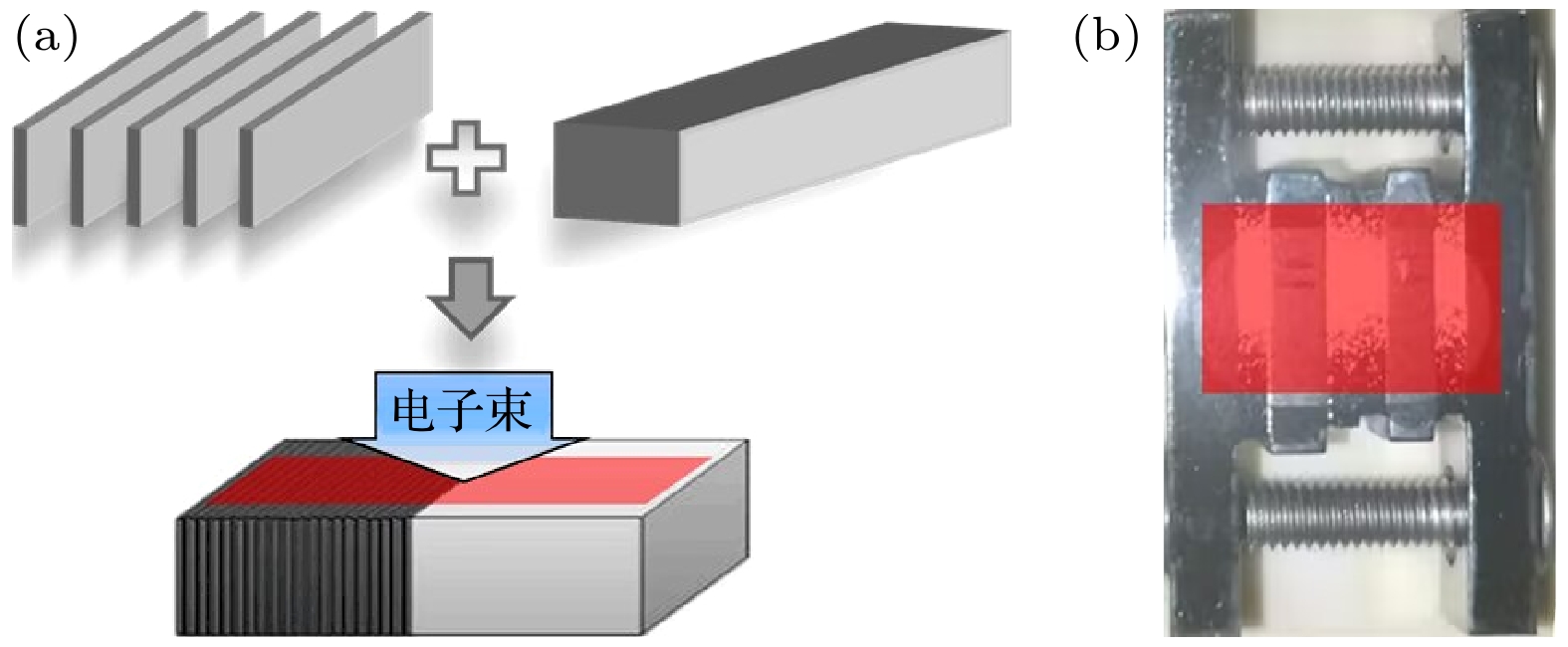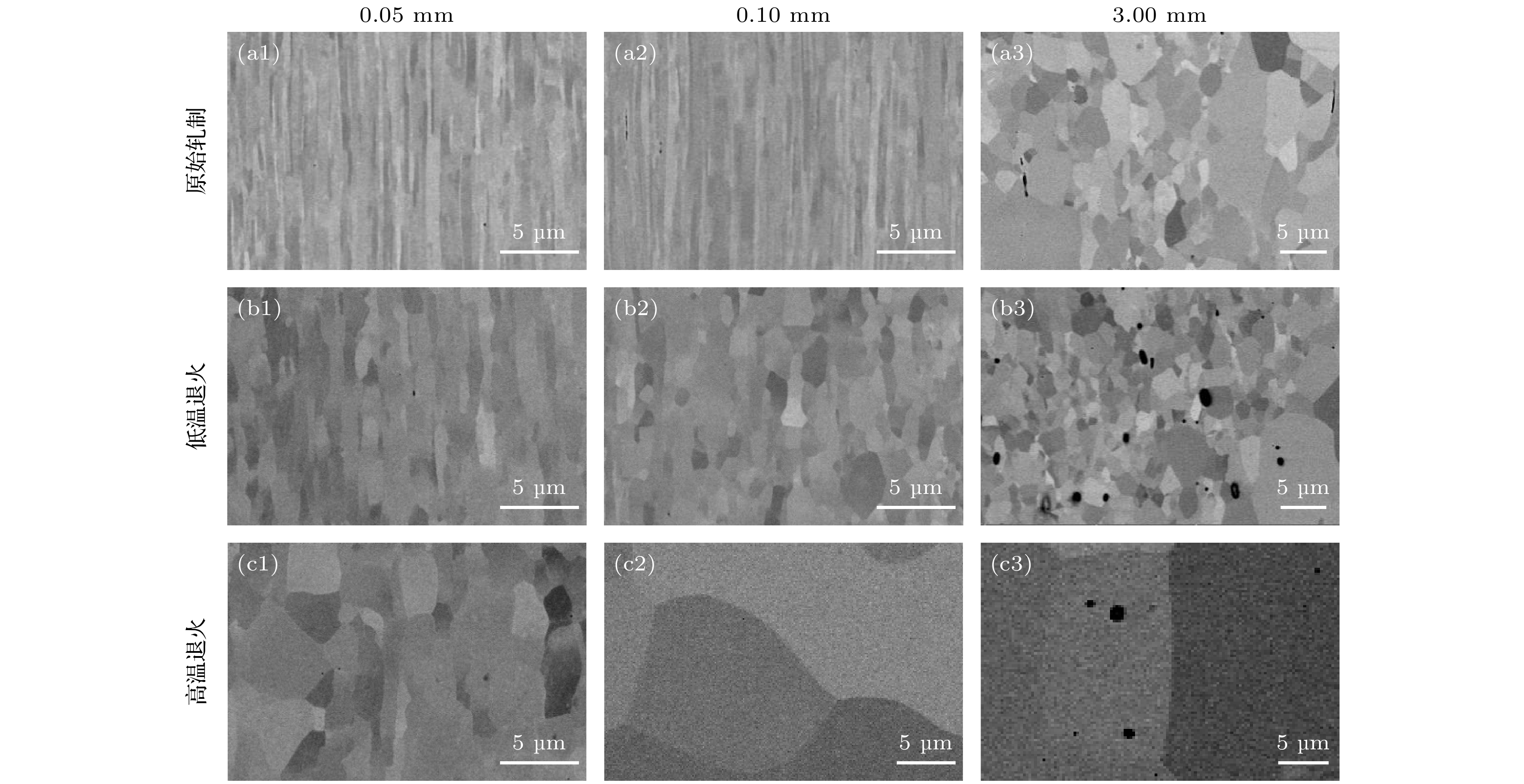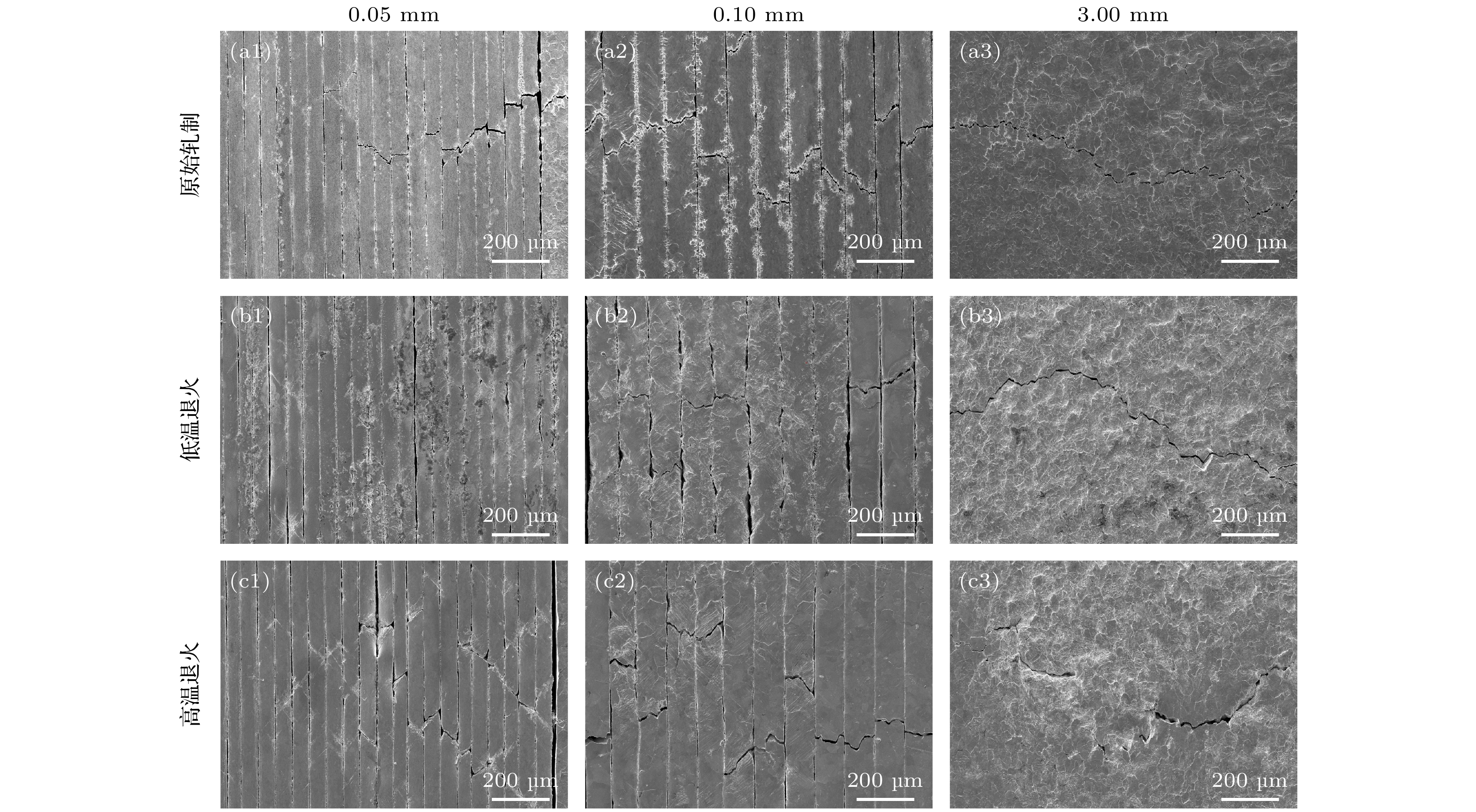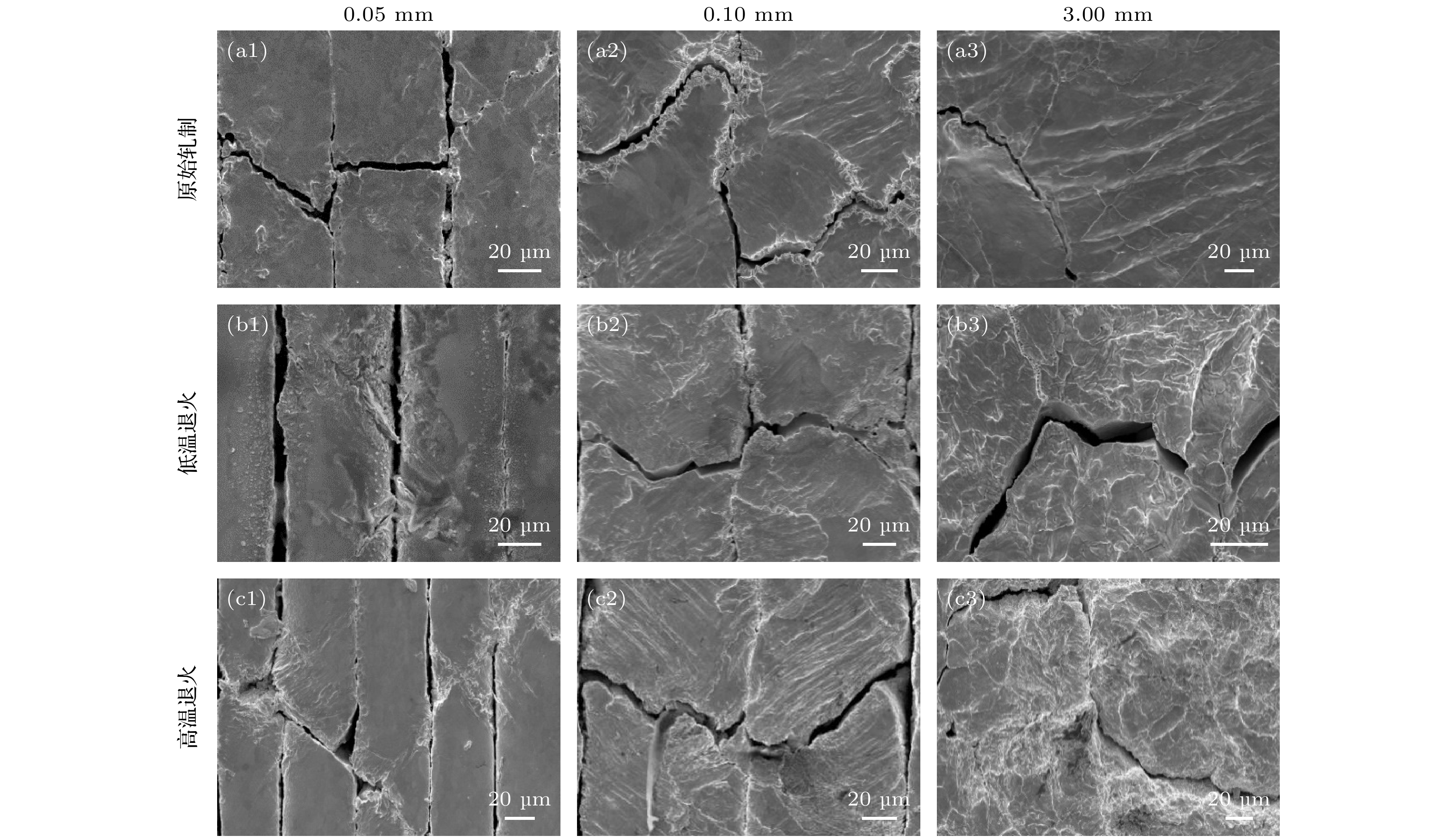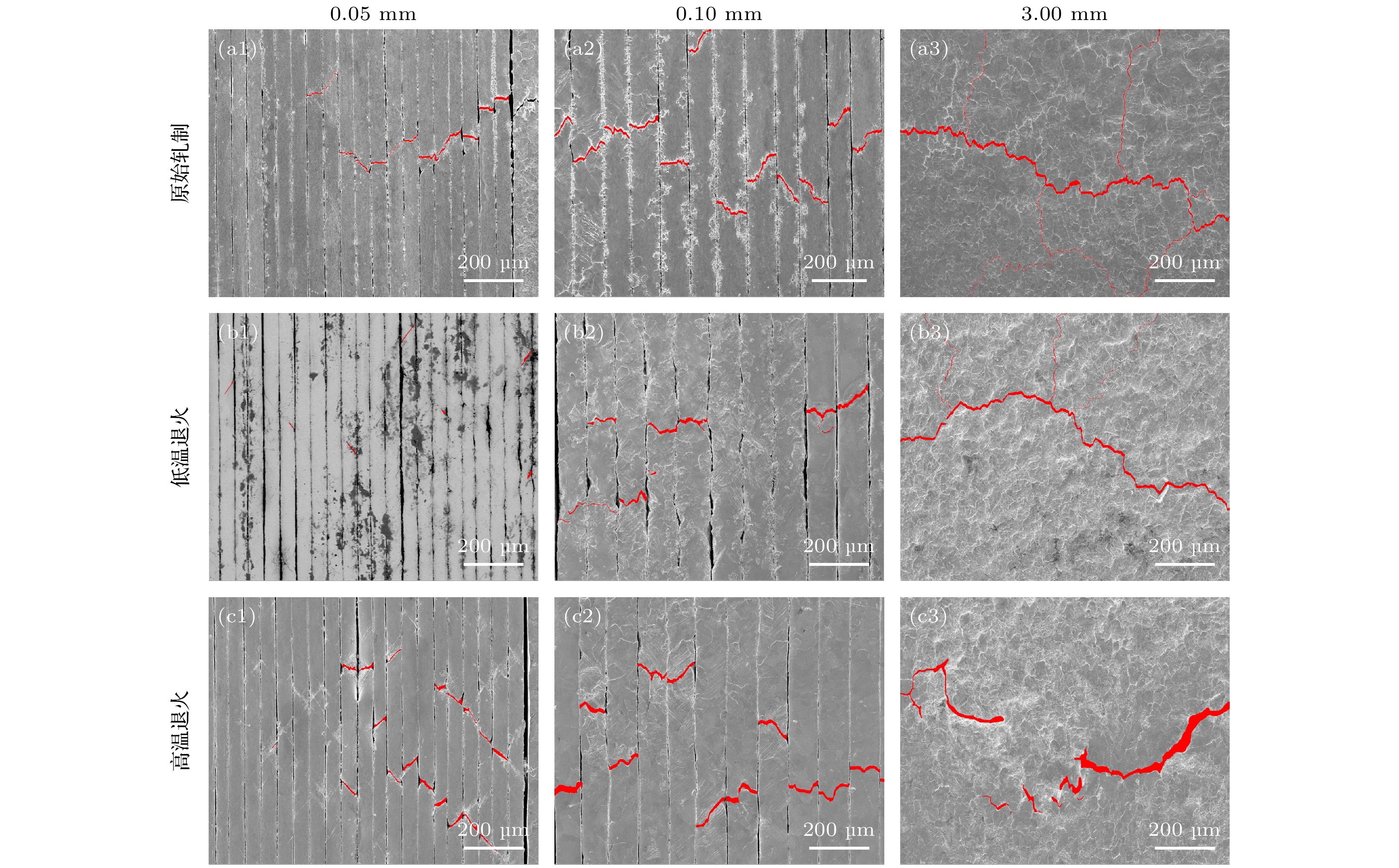-
钨(W)作为面向等离子体材料的最佳候选者, 对热冲击载荷的响应是未来聚变装置研究中的重要问题. 在热负荷作用下, 钨基面向等离子体材料(W-based plasma-facing material, W-PFM)的表面会产生热损伤, 包括脆性开裂和疲劳裂纹. 本文提出了抑制W-PFM 热损伤的新方案, 即叠片结构W-PFM 方案. 利用电子束设备对不同厚度和热处理工艺的W箔组成的叠片结构W进行了热疲劳实验. 样品施加功率密度为48 MW/m2的热脉冲, 循环5000次. 随着W箔片厚度的减小, 叠片结构W表面的裂纹损伤减轻. 叠片结构W在循环热载荷作用后表面产生的主裂纹均近似平行于箔片厚度方向. 厚度较小的W箔表面只有主裂纹, 厚度较大的W箔表面除了出现主裂纹外, 还会形成裂纹网络, 且主裂纹宽度较大. 最终选取热损伤区域的扫描电子显微镜图像, 并利用计算机图片处理软件和分析软件, 对表面热疲劳裂纹损伤进行了定量分析. 发现相同厚度下应力态W的裂纹面积最小, 裂纹数量最少, 说明去应力态W的抗辐照损伤能力最强. 实验结果还表明, 除了微观组织的影响, 叠片结构W-PFM的单轴应力状态和裂纹阻断机制也都对其热疲劳性能的提高有所贡献.The response of tungsten (W) to thermal shock loading, as the best candidate for plasma-facing material (PFM), is an important issue in the research of future fusion devices. Under thermal loading, thermal irradiation damage, including brittle cracking and fatigue cracking, occurs on the surface of tungsten based plasma-facing material (W-PFM). In this work, a new scheme to suppress the thermal irradiation damage to W-PFM, i.e. the laminated structure W-PFM scheme, is proposed. Thermal fatigue experiments of laminated structure W composed of W foils with different thickness and heat treatment processes are carried out by using an electron beam device. The samples are subjected to thermal pulses with a power density of 48 MW/m2 for 5000 cycles. The results indicate that the crack damage to the surface of the laminated structure W decreases with the decrease of the thickness of W foils under the same heat treatment conditions. The main cracks are produced on the surface of laminated structure W after cyclic thermal loads have been all approximately parallel to the foil thickness direction. Only the main cracks appear on the surfaces of W foils with a smaller thickness, while crack networks develop on the surfaces of W foils with a larger thickness , in addition to the main cracks with a larger width. In the rolled state, the laminated structure W has the lowest degree of surface plastic deformation for the same thickness. The thermal fatigue crack damage to the surface is quantitatively analyzed by using computer image processing software and analysis software, and scanning electron microscope images of the thermal damage area are finally selected. It is found that the de-stressed state W has the smallest crack area and the smallest number of cracks for the same thickness, indicating that the de-stressed state W has the strongest resistance to irradiation damage. The experimental results also show that in addition to the effect of microstructure, both the uniaxial stress state and the crack-blocking mechanism of the laminated structured W-PFM contribute to the improvement of its thermal fatigue performance.
-
Keywords:
- fusion /
- plasma facing material /
- tungsten /
- thermal fatigue
[1] Zhang C, Wang K, Si R, Li J, Song C, Wu S, Yan B, Chen C 2023 Chin. Phys. B 32 113102
 Google Scholar
Google Scholar
[2] Xu C, Wan F R 2023 ActaPhys. Sin. 72 056801 [徐驰, 万发荣 2023 物理学报 72 056801]
 Google Scholar
Google Scholar
Xu C, Wan F R 2023 ActaPhys. Sin. 72 056801
 Google Scholar
Google Scholar
[3] Qin M F, Wang Y M, Zhang H Y, Sun J Z 2023 ACTA Phys. Sin. 72 245204 [秦梦飞, 王英敏, 张红玉, 孙继忠 2023 物理学报 72 245204]
 Google Scholar
Google Scholar
Qin M F, Wang Y M, Zhang H Y, Sun J Z 2023 ACTA Phys. Sin. 72 245204
 Google Scholar
Google Scholar
[4] Terra A, Sergienko G, Gago M, Kreter A, Martynova Y, Rasinski M, Wirtz M, Loewenhoff T, Mao Y, Schwalenberg D, Raumann L, Coenen J W, Moeller S, Koppitz T, Dorow-Gerspach D, Brezinsek S, Unterberg B, Linsmeier C 2020 Phys. Scr. 2020 014045
[5] Wirtz M, Linke J, Loewenhoff Th, Pintsuk G, Uytdenhouwen I 2017 Nucl. Mater. Energy 12 148
 Google Scholar
Google Scholar
[6] Wang L, Wang B, Li S D, Ma D, Tang Y H, Yan H 2016 Int. J. Refract. Met. Hard Mater. 61 61
 Google Scholar
Google Scholar
[7] Loewenhoff Th, Linke J, Pintsuk G, Thomser C 2012 Fusion Eng. Des. 87 1201
 Google Scholar
Google Scholar
[8] Pintsuk G, Prokhodtseva A, Uytdenhouwen I 2011 J. Nucl. Mater. 417 481
 Google Scholar
Google Scholar
[9] Linke J, Loewenhoff T, Massaut V, Pintsuk G, Ritz G, Rödig M, Schmidt A, Thomser C, Uytdenhouwen I, Vasechko V, Wirtz M 2011 Nucl. Fusion 51 073017
 Google Scholar
Google Scholar
[10] Garkusha I E, Landman I, Linke J, Makhlaj V A, Medvedev A V, Malykhin S V, Peschanyi S, Pintsuk G, Pugachev A T, Tereshin V I 2011 J. Nucl. Mater. 415 S65
 Google Scholar
Google Scholar
[11] Pintsuk G, Kühnlein W, Linke J, Rödig M 2007 Fusion Eng. Des. 82 1720
 Google Scholar
Google Scholar
[12] Wang Y, Wang H, Mi B, Zhao J, Zhang C 2023 J. Nucl. Mater. 583 154555
 Google Scholar
Google Scholar
[13] Wirtz M, Linke J, Loewenhoff T, Pintsuk G, Uytdenhouwen I 2016 Phys. Scr. T167 014015
 Google Scholar
Google Scholar
[14] Rieth M, Dudarev S L, Gonzalez De Vicente S M, et al. 2013 J. Nucl. Mater. 432 482
 Google Scholar
Google Scholar
[15] Wurster S, Baluc N, Battabyal M, Crosby T, Du J, García-Rosales C, Hasegawa A, Hoffmann A, Kimura A, Kurishita H, Kurtz R J, Li H, Noh S, Reiser J, Riesch J, Rieth M, Setyawan W, Walter M, You J H, Pippan R 2013 J. Nucl. Mater. 442 S181
 Google Scholar
Google Scholar
[16] Parkes N, Dodds R, Watson A, Dye D, Hardie C, Humphry-Baker S A, Knowles A J 2023 Int. J. Refract. Met. Hard Mater. 113 106209
 Google Scholar
Google Scholar
[17] Alam M E, Odette G R 2023 Nucl. Mater. Energy 36 101467
 Google Scholar
Google Scholar
[18] Yang T, Wang J, Feng F, Liu X, Youyun L, Xueyu G 2023 Fusion Eng. Des. 196 113991
 Google Scholar
Google Scholar
[19] Dang N, Lian Y, Song J, Dai S, Yan B, Fan F, Wang J, Liu X 2023 Int. J. Refract. Met. Hard Mater. 117 106415
 Google Scholar
Google Scholar
[20] Coenen J W, Mao Y, Sistla S, Riesch J, Hoeschen T, Broeckmann Ch, Neu R, Linsmeier Ch 2018 Nucl. Mater. Energy 15 214
 Google Scholar
Google Scholar
[21] Neu R, Coenen J W, Curzadd B, Gietl H, Greuner H, Höschen T, Hunger K, Lürbke R, Müller A, Riesch J, Schlick G, Siefken U, Visca E, You J 2023 Mater. Res. Express 10 116516
 Google Scholar
Google Scholar
[22] Terra A, Sergienko G, Tokar M, Borodin D, Dittmar T, Huber A, Kreter A, Martynova Y, Möller S, Rasiński M, Wirtz M, Loewenhoff Th, Dorow-Gerspach D, Yuan Y, Brezinsek S, Unterberg B, Linsmeier Ch 2019 Nucl. Mater. Energy 19 7
 Google Scholar
Google Scholar
[23] Wang B, Hu D Z, Ma D, Lu G H 2018 US10102928B2
[24] Wang B, Hu D Z, Ma D, Lu G H 2016 ZL201410117811. X
[25] Li S D, Wang B, Liu Y H, Qi Y F, Li M, Ma Y T 2018 Chin. J. Vac. Sci. Technol. 38 434
[26] Xiao S, Ma Y, Tian L, Li M, Qi C, Wang B 2020 Nucl. Mater. Energy 23 100746
 Google Scholar
Google Scholar
[27] Wu X C, Xu L P 2002 Phys. Test. Chem. Anal. A Physical Test. 38 14
-
图 3 W箔和块体W表面形貌 (a1), (b1), (c1) 0.05 mm, 轧制, 去应力和再结晶W; (a2), (b2), (c2) 0.1 mm, 轧制, 去应力和再结晶W; (a3), (b3), (c3) 3 mm, 轧制, 去应力和再结晶W
Fig. 3. The morphology of W foil and bulk W: (a1), (b1), (c1) 0.05 mm, rolled, stress-free, and recrystallied W; (a2), (b2), (c2) 0.1 mm, rolled, stress-free, and recrystallied W; (a3), (b3), (c3) 3 mm: rolled, stress-free, and recrystallied W.
图 4 不同热处理工艺下的叠片结构W和块状W表面的热损伤形貌 (a1), (b1), (c1) 0.05 mm, 轧制, 去应力和再结晶W; (a2), (b2), (c2) 0.1 mm, 轧制, 去应力和再结晶W; (a3), (b3), (c3) 3 mm, 轧制, 去应力和再结晶W
Fig. 4. Thermal damage morphology of laminated W and bulk W under different heat treatment processes: (a1), (b1), (c1) 0.05 mm, rolled, stress-free, and recrystallied W; (a2), (b2), (c2) 0.10 mm, rolled, stress-free, and recrystallied W; (a3), (b3), (c3) 3.00 mm, rolled, stress-free, and recrystallied W.
图 5 不同热处理工艺下的W箔和块体W表面热损伤区域的微观形貌 (a1), (b1), (c1) 0.05 mm, 轧制, 去应力和再结晶W; (a2), (b2), (c2) 0.10 mm, 轧制, 去应力和再结晶W; (a3), (b3), (c3) 3.00 mm, 轧制, 去应力和再结晶W
Fig. 5. Micromorphology of thermal damage area on the surface of W foil and bulk W under different heat treatment processes: (a1), (b1), (c1) 0.05 mm, rolled, stress-free, and recrystallied W; (a2), (b2), (c2) 0.10 mm, rolled, stress-free, and recrystallied W; (a3), (b3), (c3) 3.00 mm, rolled, stress-free, and recrystallied W.
表 1 热处理工艺参数
Table 1. Heat treatment process parameters.
升温速率/(K·min–1) 最高温度/℃ 保温时间/h 降温速率/(K·min–1) 去应力退火 > 400℃, 15; < 400℃, 20 1000 0.5 > 400℃, 20; < 400℃, 随炉冷却 再结晶退火 > 400℃, 15; < 400℃, 20 1600 1.0 > 400℃, 20; < 400℃, 随炉冷却 表 2 实验后样品热加载区域表面粗糙度
Table 2. Surface roughness of the thermally loaded region of the samples after experimentation
0.05 mm/
(Ra·μm–1)0.10 mm/
(Ra·μm–1)3.00 mm/
(Ra·μm–1)原始轧制态 0.06 0.14 1.00 去应力态 0.11 0.40 1.30 再结晶态 0.18 0.65 2.00 -
[1] Zhang C, Wang K, Si R, Li J, Song C, Wu S, Yan B, Chen C 2023 Chin. Phys. B 32 113102
 Google Scholar
Google Scholar
[2] Xu C, Wan F R 2023 ActaPhys. Sin. 72 056801 [徐驰, 万发荣 2023 物理学报 72 056801]
 Google Scholar
Google Scholar
Xu C, Wan F R 2023 ActaPhys. Sin. 72 056801
 Google Scholar
Google Scholar
[3] Qin M F, Wang Y M, Zhang H Y, Sun J Z 2023 ACTA Phys. Sin. 72 245204 [秦梦飞, 王英敏, 张红玉, 孙继忠 2023 物理学报 72 245204]
 Google Scholar
Google Scholar
Qin M F, Wang Y M, Zhang H Y, Sun J Z 2023 ACTA Phys. Sin. 72 245204
 Google Scholar
Google Scholar
[4] Terra A, Sergienko G, Gago M, Kreter A, Martynova Y, Rasinski M, Wirtz M, Loewenhoff T, Mao Y, Schwalenberg D, Raumann L, Coenen J W, Moeller S, Koppitz T, Dorow-Gerspach D, Brezinsek S, Unterberg B, Linsmeier C 2020 Phys. Scr. 2020 014045
[5] Wirtz M, Linke J, Loewenhoff Th, Pintsuk G, Uytdenhouwen I 2017 Nucl. Mater. Energy 12 148
 Google Scholar
Google Scholar
[6] Wang L, Wang B, Li S D, Ma D, Tang Y H, Yan H 2016 Int. J. Refract. Met. Hard Mater. 61 61
 Google Scholar
Google Scholar
[7] Loewenhoff Th, Linke J, Pintsuk G, Thomser C 2012 Fusion Eng. Des. 87 1201
 Google Scholar
Google Scholar
[8] Pintsuk G, Prokhodtseva A, Uytdenhouwen I 2011 J. Nucl. Mater. 417 481
 Google Scholar
Google Scholar
[9] Linke J, Loewenhoff T, Massaut V, Pintsuk G, Ritz G, Rödig M, Schmidt A, Thomser C, Uytdenhouwen I, Vasechko V, Wirtz M 2011 Nucl. Fusion 51 073017
 Google Scholar
Google Scholar
[10] Garkusha I E, Landman I, Linke J, Makhlaj V A, Medvedev A V, Malykhin S V, Peschanyi S, Pintsuk G, Pugachev A T, Tereshin V I 2011 J. Nucl. Mater. 415 S65
 Google Scholar
Google Scholar
[11] Pintsuk G, Kühnlein W, Linke J, Rödig M 2007 Fusion Eng. Des. 82 1720
 Google Scholar
Google Scholar
[12] Wang Y, Wang H, Mi B, Zhao J, Zhang C 2023 J. Nucl. Mater. 583 154555
 Google Scholar
Google Scholar
[13] Wirtz M, Linke J, Loewenhoff T, Pintsuk G, Uytdenhouwen I 2016 Phys. Scr. T167 014015
 Google Scholar
Google Scholar
[14] Rieth M, Dudarev S L, Gonzalez De Vicente S M, et al. 2013 J. Nucl. Mater. 432 482
 Google Scholar
Google Scholar
[15] Wurster S, Baluc N, Battabyal M, Crosby T, Du J, García-Rosales C, Hasegawa A, Hoffmann A, Kimura A, Kurishita H, Kurtz R J, Li H, Noh S, Reiser J, Riesch J, Rieth M, Setyawan W, Walter M, You J H, Pippan R 2013 J. Nucl. Mater. 442 S181
 Google Scholar
Google Scholar
[16] Parkes N, Dodds R, Watson A, Dye D, Hardie C, Humphry-Baker S A, Knowles A J 2023 Int. J. Refract. Met. Hard Mater. 113 106209
 Google Scholar
Google Scholar
[17] Alam M E, Odette G R 2023 Nucl. Mater. Energy 36 101467
 Google Scholar
Google Scholar
[18] Yang T, Wang J, Feng F, Liu X, Youyun L, Xueyu G 2023 Fusion Eng. Des. 196 113991
 Google Scholar
Google Scholar
[19] Dang N, Lian Y, Song J, Dai S, Yan B, Fan F, Wang J, Liu X 2023 Int. J. Refract. Met. Hard Mater. 117 106415
 Google Scholar
Google Scholar
[20] Coenen J W, Mao Y, Sistla S, Riesch J, Hoeschen T, Broeckmann Ch, Neu R, Linsmeier Ch 2018 Nucl. Mater. Energy 15 214
 Google Scholar
Google Scholar
[21] Neu R, Coenen J W, Curzadd B, Gietl H, Greuner H, Höschen T, Hunger K, Lürbke R, Müller A, Riesch J, Schlick G, Siefken U, Visca E, You J 2023 Mater. Res. Express 10 116516
 Google Scholar
Google Scholar
[22] Terra A, Sergienko G, Tokar M, Borodin D, Dittmar T, Huber A, Kreter A, Martynova Y, Möller S, Rasiński M, Wirtz M, Loewenhoff Th, Dorow-Gerspach D, Yuan Y, Brezinsek S, Unterberg B, Linsmeier Ch 2019 Nucl. Mater. Energy 19 7
 Google Scholar
Google Scholar
[23] Wang B, Hu D Z, Ma D, Lu G H 2018 US10102928B2
[24] Wang B, Hu D Z, Ma D, Lu G H 2016 ZL201410117811. X
[25] Li S D, Wang B, Liu Y H, Qi Y F, Li M, Ma Y T 2018 Chin. J. Vac. Sci. Technol. 38 434
[26] Xiao S, Ma Y, Tian L, Li M, Qi C, Wang B 2020 Nucl. Mater. Energy 23 100746
 Google Scholar
Google Scholar
[27] Wu X C, Xu L P 2002 Phys. Test. Chem. Anal. A Physical Test. 38 14
计量
- 文章访问数: 4450
- PDF下载量: 56
- 被引次数: 0













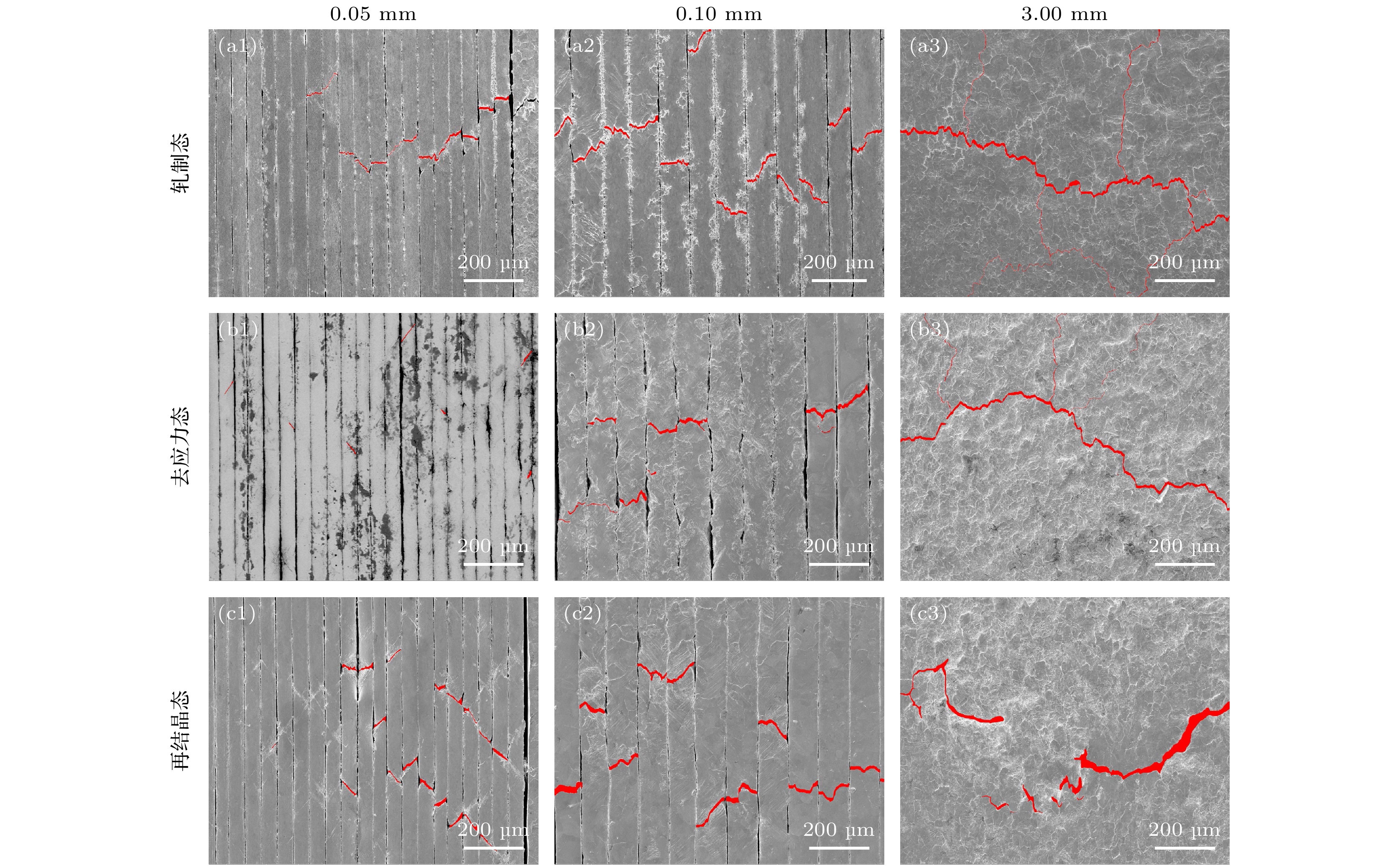
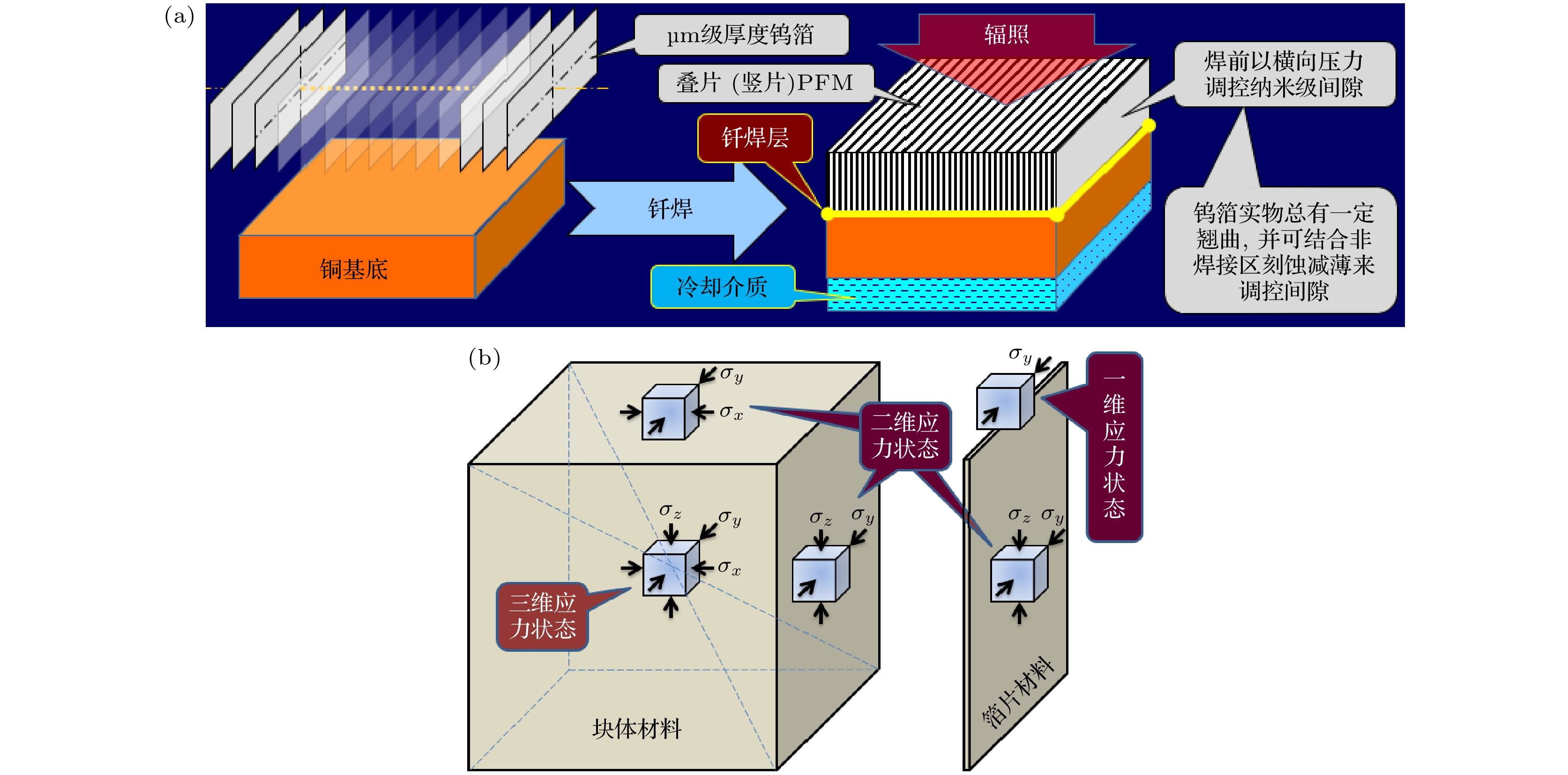
 下载:
下载:
